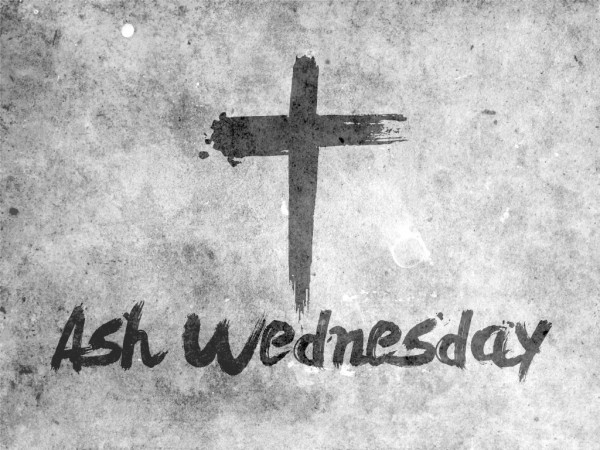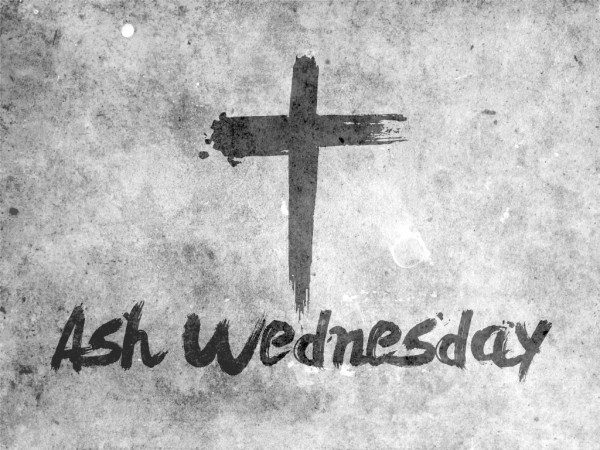The first day of Lent is called Ash Wednesday. The name Ash Wednesday comes from the smudge of ashes placed on the foreheads of the Priest and parishioners to remind them of the need for repentance and as a symbol of their mortality (Genesis 3:19). Ashes in the Bible are a sign of repentance and mourning (Matthew 11: 21).
The Ash Wednesday ashes are from the palm fronds burnt on Shrove Tuesday (the day before Ash Wednesday). The ashes are used for making the sign of the cross on the foreheads of the faithful during Ash Wednesday Litany Service. Usually, on Palm Sunday, palm fronds are being used in commemoration of the triumphant entry of Jesus into Jerusalem. It is the same palm frond that is being burnt on the Shrove Tuesday.
The term Lent comes from the old English word “lencten”, meaning “spring.” It started in the fourth century, after the Council of Nicaea, as a forty-day period during which candidates were instructed in preparation for baptism at Easter. In the Christian world, this is forty days preceding Easter; It starts from Ash Wednesday to Holy Saturday; the six days each week, from Monday through Saturday, plus the four days from Ash Wednesday to the first Saturday.
The forty days of Lent recall Jesus’ forty days in the wilderness. It is a time of spiritual preparation in memory of Christ’s death and resurrection by special devotions and discipline. The liturgical color for Lent is violet.
Lent occupies a very serious time in orthodox calendar, Christians welcome this period with humility and renewing commitment in Christ. Christians of old have many means of visualizing and symbolizing the observance. Primarily the wearing of purple and black cloths is traditional. Imposition of ashes and wearing of rags are noticed. Reading of selected Scriptures, meditation, almsgiving and fasting are obvious. All these practices are known in the liturgical Churches as part of repentance and focus on the disciplines or spiritual growth.
According to the Christian calendar, Lent begins on Ash Wednesday, which is forty-six days before Easter Sunday. Ash Wednesday retains its name from ancient tradition of marking the forehead with ashes in the sign of the cross by the Priest on Ash Wednesday. Our Church Fathers use ashes in this form to remind everyone that we are of the dust of the earth and need God’s favour. The Psalmist says that “God knows our frame; He is mindful that we are but dust” (Ps. 103:14); He is willing to forgive us our failures. God knows we are weak and that we sometimes do foolish things. When the Priest makes the sign of the cross with the ashes on the foreheads of parishioners he says to them, “Remember, you are dust.” Assuredly, God knows who we are and always helps us in our weakness. The use of Ashes also indicates penitence (John 3: 6 -10, Job 2: 8; Jer. 6: 25; Matt 1: 21).
But before Lent or Ash Wednesday, we observe three Sundays which precede it, (a) Septuagesima (third Sunday before Lent or 70 days before Easter), (b) Sexagesima (Second Sunday before Lent or 60 days before Easter), and (c) Quinquagesima (last Sunday before Lent or 50 days before Easter). These three Sundays remained as a preparatory phase for Lent itself in the West from the middle of the fifth century onwards and were established at Rome before the end of the sixth century. According to history some start the observation of the Lent fast at Septuagesima. The Greeks start at Sexagesima and the Secular Clergy at Quinquagesima.
Once we have come to Ash Wednesday, we have come to begin Lent. The term Lent has received its meaning from an old English word meaning “lengthen” and has to do with the lengthening days of spring. The word has come to mean “preparation.” The forty-six days of Lent are a time for us to prepare for the commemorative feast of the crucifixion and resurrection of Jesus.


